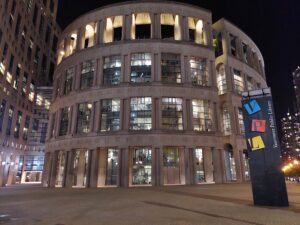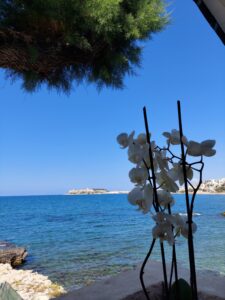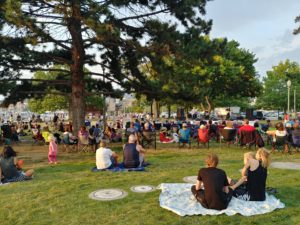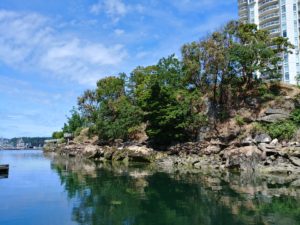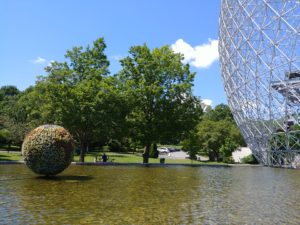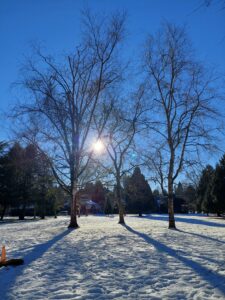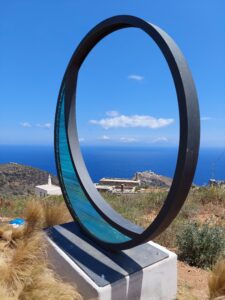Doughnut Economics can be summarised as an approach that adds the minimum acceptable social boundaries (people’s essential needs) to the maximum possible planetary boundaries (“environmental ceiling” or the Earth’s capacity to carry life).

The Amsterdam City Doughnut was launched in April 2020 and has been a sustainability compass for the city since then.
The following text was published in Kate Raworth’s website when the Amsterdam Doughnut was launched.
Introducing the Amsterdam City Doughnut
Today is the launch of the Amsterdam City Doughnut, which takes the global concept of the Doughnut and turns it into a tool for transformative action in the city of Amsterdam. It’s also the first public presentation of the holistic approach to ‘downscaling the Doughnut’ that an international team of us have been developing for more than a year. We never imagined that we would be launching it in a context of crisis such as this, but we believe that the need for such a transformative tool could hardly be greater right now, and its use in Amsterdam has the chance to inspire many more places – from neighbourhoods and villages to towns and cities to nations and regions – to take such a holistic approach as they begin to reimagine and remake their own futures.
The Doughnut was first published in 2012, proposing a social foundation and ecological ceiling for the whole world. Ever since then people have asked: can we downscale the Doughnut so that we can apply it here – in our town, our country, our region? Over the past eight years there have been many innovative initiatives exploring different approaches to doing just that – including for the Lake Erhai catchment in China, for the nations of South Africa, Wales and the UK, and for a comparison of 150 countries.
Today sees the launch of a new and holistic approach to downscaling the Doughnut, and we are confident that it has huge potential at multiple scales – from neighbourhood to nation – as a tool for transformative action. Amsterdam is a great place for launching this tool because this city has already placed the Doughnut at the heart of its long-term vision and policymaking, and is home to the Amsterdam Donut Coalition, a network of inspiring change-makers who are already putting the Doughnut into practice in their city.
When the Doughnut meets Biomimicry
This new holistic approach to downscaling the Doughnut started out as a playful conceptual collaboration between the biomimicry thinker Janine Benyus and me, as we sought to combine the essence of our contrasting ways of thinking about people and place. It then became a collaborative initiative, led by Doughnut Economics Action Lab (we are so new we don’t have a website yet – but watch this space!) working very closely with fantastic colleagues at Biomimicry 3.8, Circle Economy and C40 Cities, all collaborating as part of the Thriving Cities Initiative, funded by the KR Foundation.
The result is a holistic approach that embraces social and ecological perspectives, both locally and globally. Applied at the scale of a city, it starts by asking this very 21st century question:

It’s a question that combines local aspiration – to be thriving people in a thriving place – with a global responsibility to live in ways that respect all people and the whole planet. As Janine put it in her characteristically poetic way, ‘when a bird builds a nest in a tree, it takes care not to destroy the surrounding forest in the process’. How can humanity also learn to create settlements big and small that promote the wellbeing of their inhabitants, while respecting the wider living communities in which they are embedded?
To dive into these issues, we explore four interdependent questions, applied in this case to Amsterdam:

These questions turn into the four ‘lenses’ of the City Doughnut, producing a new ‘portrait’ of the city from four inter-connected perspectives. Drawing on the city’s current targets for the local lenses, as well as on the Sustainable Development Goals and the planetary boundaries for the global lenses, we compared desired outcomes for the city against statistical snapshots of its current performance (see the published tool for full details).

To be clear, this city portrait is not a report and assessment of Amsterdam: it is a tool and starting point, ideal for using in workshops to open up new insights and bring about transformative action. The current coronavirus lockdown means that such workshops are on hold at the moment, but changemakers in the city are already finding creative ways to sustain momentum, including through many of the 8 ways that set out below.

Our team at the Thriving Cities Initiative has also worked with city staff to create city portraits for Philadelphia, Pennsylvania and Portland, Oregon (these are not yet published) and the initial workshops that have been held to date in all three cities have brought together policymakers and change-makers in dynamic and thought-provoking discussions.

And here’s what we think is the real opportunity. The City Portraits that our team has made are what we call public portraits of the cities – made using publicly available targets and data. What if a city were to turn this into its own self portrait, gathering together residents’ lived experiences, their values, hopes and fears, their ideas and initiatives, their own understanding of their deep interconnections with the rest of world? The process of creating such City Self Portraits is, we believe, what will make this tool really take off.
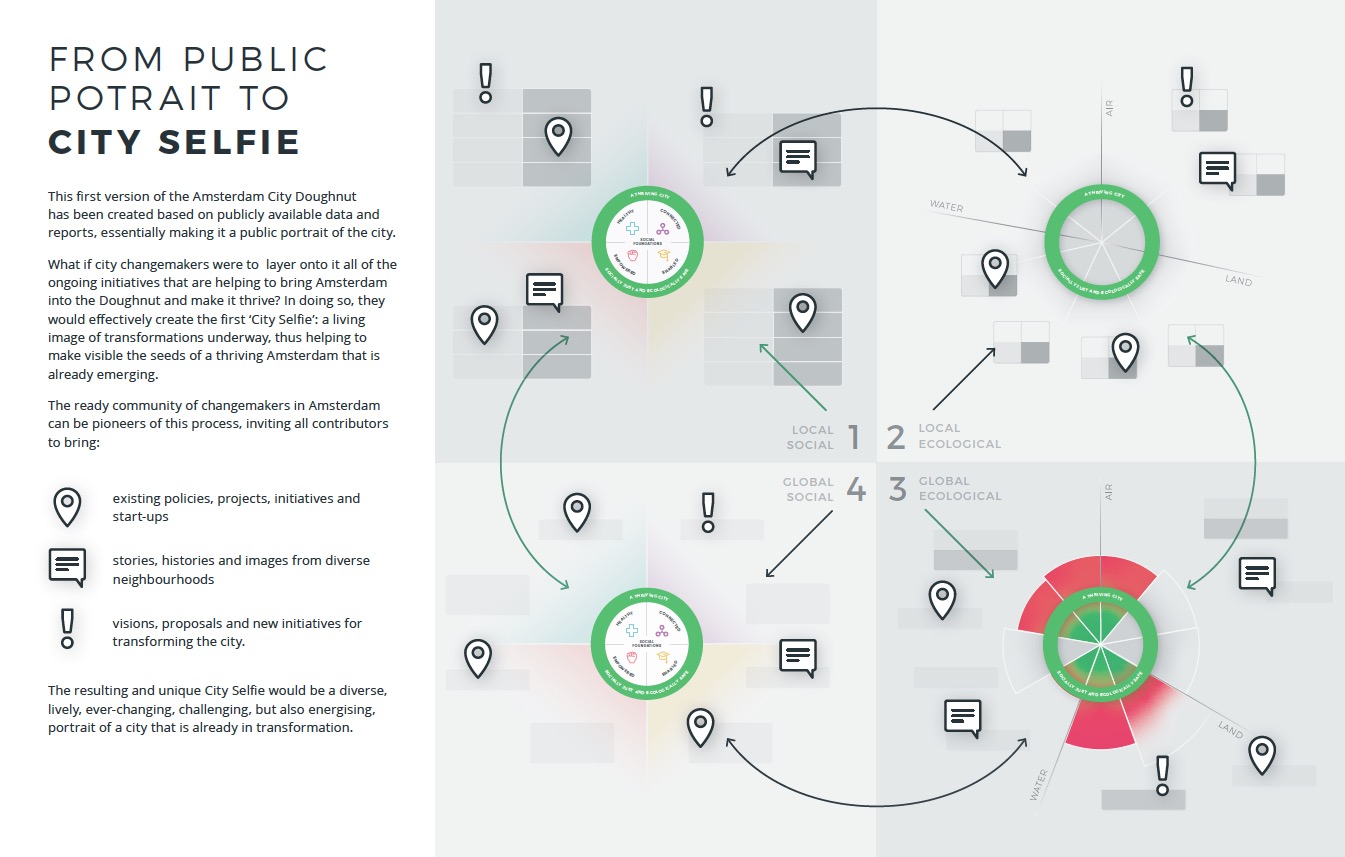
The likelihood of this happening in Amsterdam is high, thanks to the newly launched Amsterdam Donut Coalition: a network of over 30 organisations – including community groups, commons-based organisations, SMEs, businesses, academia and local government – that are already putting Doughnut Economics into practice in their work. Working together they are becoming a catalyst for transformative change, generating inspiration and action within Amsterdam and far beyond.

If you are interested in applying this tool for downscaling the Doughnut to your own place – your neighbourhood, village, town, city, region, nation – please do let us know by filling in this short form. Doughnut Economics Action Lab is already working on creating version 2.0 of the methodology and, once ready, we plan to share it on our forthcoming platform, which will make working collaboratively like this far easier and more effective. Our newly created team at DEAL is currently focused on setting up this platform, so please be a little patient, and by the end of May we will get in touch with our plans for taking this downscaling work forward.
Everyone is likewise welcome to leave responses and suggestions about Amsterdam’s City Doughnut, and the City Doughnut tool, below in the Comments section of this blog. I am currently focused on working with DEAL’s fast-growing team, as well as homeschooling my two children, and looking out for my local community – so please do understand that I may not be able to reply to comments personally, but you are of course welcome to comment and discuss with each other.
As we all start thinking about how we will emerge from this crisis, let us seek to be holistic in how we reimagine and recreate the local-to-global futures of the places we live. I believe this newly downscaled Doughnut tool has a great deal to offer and I look forward to seeing it turned into transformative action, in Amsterdam and far beyond.
Read The Amsterdam City Doughnut: a tool for transformative action
Media coverage in The Guardian, Parool and VPRO






